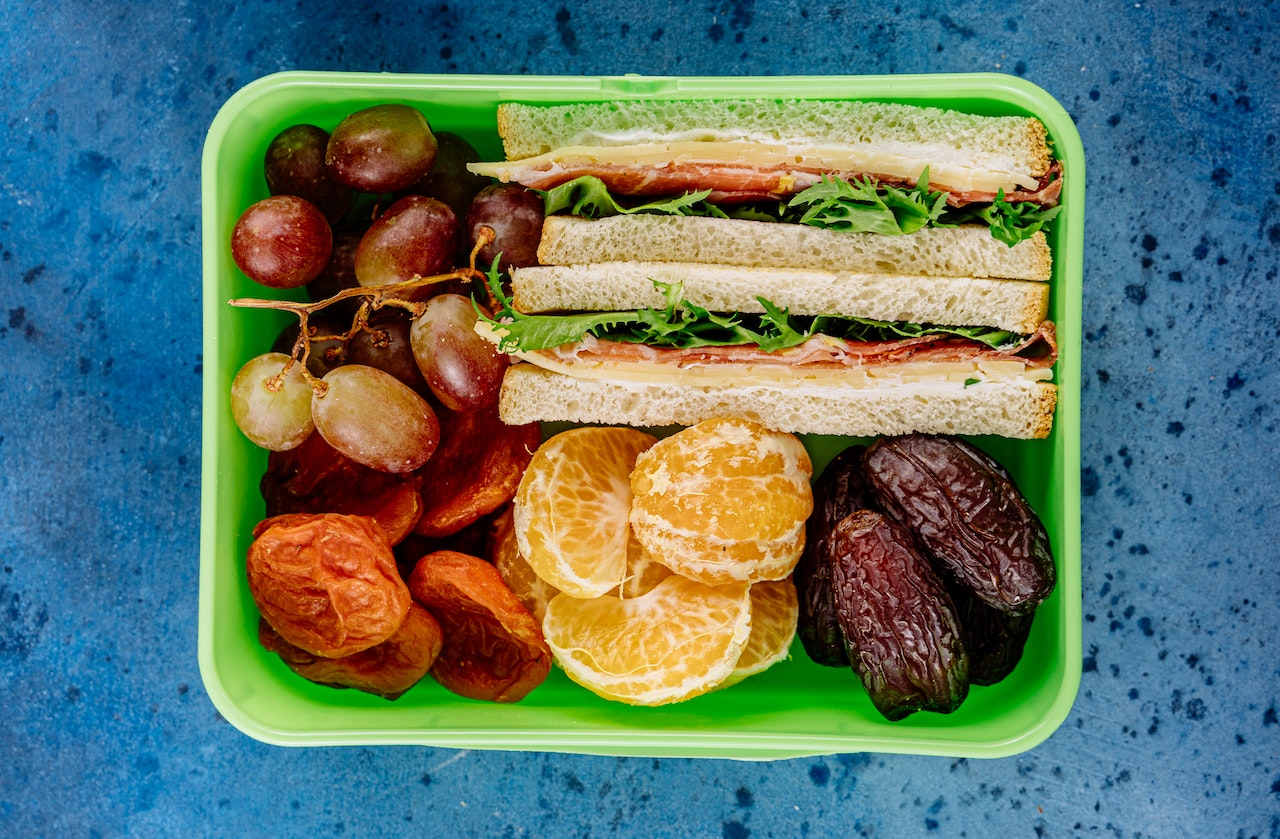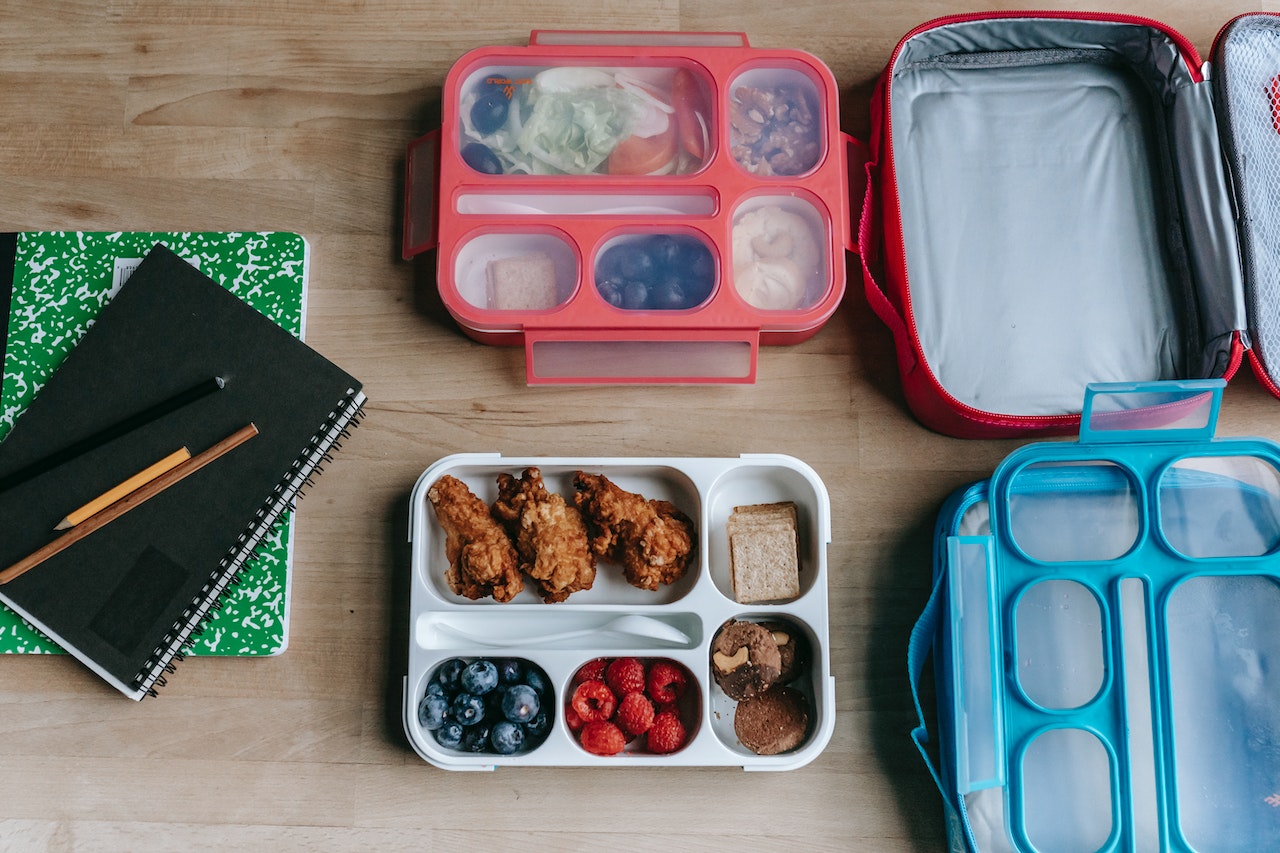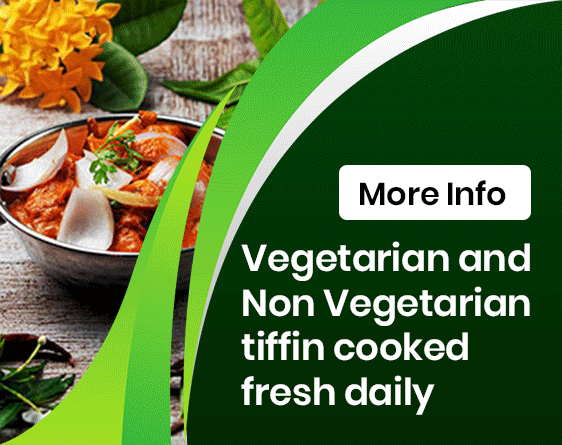Tiffin’s service is a sustainable, reusable, compact, hygienic meal container storage box. What kind of food you store inside a tiffin delivery is not limited by the size of the tiffin takeaway and your food choice. For example, one compartment of a tiffin meal might hold salad, another may store a unique saucy vegetable curry, and another might hold rice, rotis or yoghurt or noodles, fried rice, sushi rolls, soy sauce and wasabi, or miso soup with soba noodles.
It is like a small package of a combination of blends of tastes that uplifts your mood on a tedious, stressful day when heading to work or education.
What an Indian lunch box contains?
The Indian lunch box has multiple compartments to keep different foods, and they have a sturdy clip on the outside to prevent lids from flying off. The desi tiffin service holds snacks and full lunches, and the compartments can hold sandwiches, roti, rice, vegetables, lentils and curries.
The lunchboxes contain compartments stacked together in a bundle tied with clips, and it has a handle used to carry the box to places. You need to scoop the layers artfully placed inside the lunchbox compartments to eat from the lunchbox.

The tiffins’ bottom layers can be filled with crunchy fresh green fruits and vegetables like chopped mint leaves, green papaya, diced chilli and fragrant flavoured sugary, salty salad masala, or you can fill the tiffins with green and red capsicum, cucumber, ripe tomato, Spanish red onion and coriander leaves with roasted mushrooms and lemon or prepare other variations of salads with tri-colour quinoa, fresh green mango, lemon rind or chopped mint with creamy spinach, red lentil curry, tomatoes and pre- boiled potatoes with fried turmeric, garlic, salt, chilli, brown mustard seeds and yoghurt.
Sandwiches with crumble chunks, pasta, or a side dish made from pitta bread or leafy vegetables complete a delicious salad and make a great lunch box. Yet, Indian lunch meals coalesce traditionally prepared spicy aromatic soupy lentil recipes, vegetables, sides, curries, yoghurt and pickles.
One container box can have layers of spread crackers, oatcakes, flatbreads, rice cakes, sandwiches, roti or tortilla wraps.
Such containers store food carried to the workplace or picnic while travelling. In addition, you can store a variety of meals in mini movable storage for posh picnics or family feasts.
Finally, a lunch box carries portable dining –a one to four-course meal where you stack the compartments with delicious foods and put the boxes back as it empties.
Though most Indian tiffin takeaway offers veg tiffin service, some provide meat and chicken meals where the tender and juicy tandoori chicken can be served over squash and a chunky mushroom-tomato sauce, or the tender meatballs can be served on the top for great flavour.
Tiffins offer balanced nutritious meals
A nutritious meal must contain a balanced combination of plant proteins, easy-to-digest fats, oils, nuts, seeds, and vegetables. The breakfast tiffin service medley must be simple yet straightforward, with some carbohydrates and proteins where a right balance of nourishment must be added to start the day.
Carbohydrates do not need to come only through bread, pasta or roti; you can get carbohydrates from grains, lentils, vegetables and fruits for fibres. You must include sprouts, chickpeas, beans, quinoa, lentils, and proteins in your meal, and if you prepare a salad, use a pleasing dressing with lime-mint zesty salty, sugary taste to get a healthy meal.
If you want to combine a meal on the move with a barbecue, add a bit of drama by bringing the salads in the tiffin boxes with some grilling meat or fish.
Though Tiffin Food Services, or dabba, became famous during the industrial era, historically, the mud storage units and stacked metal pots were widely used in traditional tiffin Indian cuisine transportation. The modern metal compartments with matching-size boxes with leak-proof lids that seal the food where the boxes are clamped to the main stand to lock the boxes to prevent spilling are compact compared to the classical stacked brass pots.
These can be single, lidded or double-stackers, triple-stackers, or four-stackers and sizes of the bowls range from tiny units, with each bowl capable of holding one type of meal or salad or curry, to large units capable of feeding as many people as there are bowls in the stack.
In smaller side containers in the boxes, you can add tomatoes or lime and cut them into wedges or slices.
Why do you need to pack tiffins perfectly?
If you’re eating immediately, garnish with finely diced cucumber or a blob of yoghurt or crème frâiche. Cucumber contains a lot of moistness, so it needs gentle cooking with flavourings to help them blend smoothly, preventing them from separating once it is chilled.
It is the time to pick up plenty of different varieties of natural items like plum, vine, cherry, and orange, golden and stripey coloured ones – especially if you grow your own.
South Indian tiffin food home delivery often embellishes the final meal with grated coconut shreds, coriander, curry leaves, or cut lemon wedges and tomatoes.
The Indian tiffin carrier’s stacked, segmented-storage bowl system was fixed into a stand for transporting freshly prepared foods for the on-the-go.
The definition of Tiffin is a soft drink, a snack, a late-morning meal, morning tea, a light luncheon, and even lunch. Historically, canisters were used to store and transport the food and the common lunch pails that helped Indian and British settlers during their travels around Southeast Asia.
So, tiffin delivery was widely used in Malaya, China, Singapore, Hong Kong and Indonesia to carry hot soups and meals containing noodles, rice, dumplings, curry, soup, and even sushi that can be easily stored in cylindrical bowls.
However, the kind of food inside a tiffin takeaway was limited by the number of boxes and size of the carrier. For example, a typical Indian vegetarian tiffin service London container may hold salad, another box may have fried rice, and others might hold sauce, noodles and curries, wasabi, sushi rolls, or soups with soba noodles.
In the mid-20s, tiffin couriers delivered home-cooked meals to thousands of office workers. Local restaurants, dhabas, canteens, messes and foods-chains in every part of the world offer daily tiffin service that prepares distinctive delicacies and ferry the meal packed in tempting food-grade material for everyday requirements and feasts.
Many such eateries transport delicious multi-cuisine meals in huge metal tiffin boxes prepared in the most authentic manners for traditional ceremonies.


